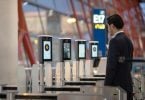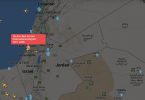The broad failures of the aviation sector in India have made it the prime example of how to steadily diminish the potential of a growing market, especially for the home carriers. But in the midst of an Asian boom in air travel, there is another lagging national player that is in danger of being further marginalized – the Philippines.
Across its history, Philippine aviation has had a long list of failures and, for many years, had a sketchy safety record. Spread across more than 7,000 islands, the nation is reliant on air transport to stitch together its commercial and social fabric. For those who need to travel between its population centers, there are virtually no other options.
In the current environment, there are two major players, Philippine Airlines (PAL), and its subsidiary, Airphil Express, and Cebu Pacific. Domestically they control most of the traffic despite an Air Asia affiliate company and some smaller competitors on trunk routes. PAL has a long, complex, and often rocky history, and Cebu Pacific is one of the success stories among new airlines around the world.
Stuck in a bad place
But the environment in which they operate presents challenges not faced elsewhere. Since 2008, the Philippines has held a status 2 from the US FAA due to multiple questions about the maintenance and supervision processes employed. While still allowed to operate to the US, no new routes may be added nor can the equipment be changed, meaning that new B777ERs intended for transpacific use are not being utilized as anticipated. The FAA status has also affected the nation’s airlines when they operate to nations where the FAA constraints are also observed.
The following year, 2009, found the EU also blacklisting airlines from the Philippines, destroying the possibility of new European destinations. When asked about a change, the airlines say they are “hopeful” that the restrictions will be removed and have prodded the government towards the necessary steps. But in the case of the US, we are at 4 years and counting.
And there are domestic infrastructure problems as well. Many Philippine airports are open only during daylight hours and that maxes out Manila’s airport capacity during prime daylight hours. For most of the day the airport is full. This means that many international services must operate overnight when slots are available. This makes for excellent aircraft utilization but some rather unattractive departure and arrival times. Again, there are fixes being promised.
Scary Terminal 1
In addition, Terminal 1 at Manila’s Ninoy Aquino International Airport is often said to be among the most abysmal in the world – dark, overcrowded, and dingy. PAL uses T2 and Cebu Pacific T3, but in general, the airport compares unfavorably to other Asian airports, many of which are seen as the best in the world.
High costs and fees imposed by the government were cited in the recent termination of the country’s only nonstop link to Europe. Earlier this year, KLM began routing its flight via Taiwan, doing a turnaround tag from Taipei to Manila and eliminating a crew overnight.
Hubbing in Dubai?
Nonetheless, there is ample service to the west provided by the Gulf triad of Etihad, Emirates, and Qatar Airways – each of them operating double daily flights to their Gulf hubs and beyond. One wonders if the Philippine carriers, even if the blacklist were lifted, could offer viable competitive service to Europe. Given its inability to expand or modernize equipment to North America, a region with a huge expatriate population, connections via Hong Kong, Tokyo, and Seoul, operating from both Manila and Cebu, offer a buffet of one-stop connections to numerous points in the US and Canada.
Like India, the Philippines is a growing economy with great potential but also like India, poor regulation and careless oversight might have robbed the Philippine carriers of their future, allowing others to become established, as the home players struggle and perhaps come to the party far too late.
(eTN): No government PALs in the Philippines | re-post license | post content






















